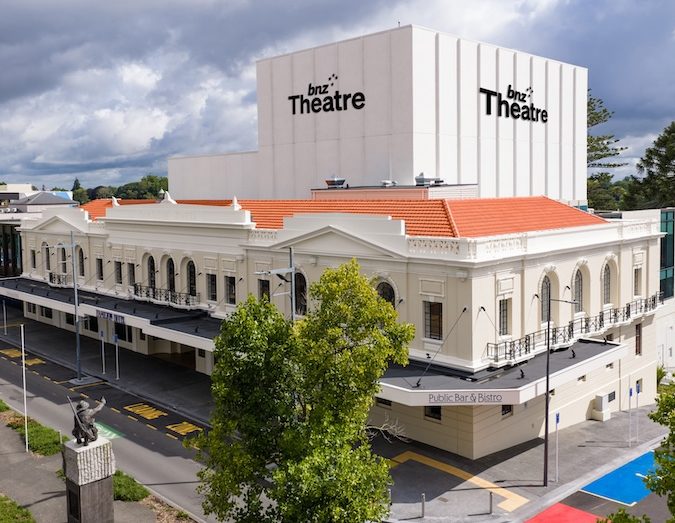
As our cities evolve, so does the design. Everywhere we look, step into, cultural aspects of New Zealand’s mana whenua are incorporated and integrated into these spaces.
It’s called bicultural design, and it is taking over across the country. Most recently in the form of a redesign of Dunedin’s main street.
Bicultural design in New Zealand places Māori central to the decision making process around design. It’s about having mana whenua decide and organise how architectural pieces can express the cultural concepts that is rooted in the country, to best fit represent New Zealand.
That means, everywhere we visit, we are reminded of the core culture and identity of Aotearoa.
Bicultural design already exists in New Zealand and has been here for a long time, in popular Kiwi hotspots that tourists and Kiwis alike frequent.
Read more: Re-imagining a better world: how eight organisations are using design to achieve social impact.
Auckland’s Viaduct Harbour is one example. Completed in 2000, local iwi’s Ngāti Whātua Ōrākei, Ngāti Pāoa and kaitiaki of the waterfront area collaborated and worked together to integrate cultural identity into the popular Viaduct. Weaving patterns on the waterfront ground represent Pātiki (flounder), a local delicacy and symbol of prosperity while also referencing the area’s history, was a gift from the kuia of Ngāti Whātua Ōrākei.
Further South, and to Dunedin where Glen Hazelton, Dunedin City Council Plan Director, shares details of the country’s newest bicultural design project – a redesign of the city’s main street, George St.
The Dunedin City Council is working with local mana whenua, Kāi Tahu to give the city’s main street a cultural rebrand.

The council have emphasised that they will be working with Kāi Tahu as a partnership to share values to “enhance and protect our unique Ōtepoti Dunedin for the future of its people,” says Hazelton.
He says that the collaboration and work with local iwi and mana whenua is their responsibility on “being a better treaty partner”.
Kāi Tahu have shared that the redesign of George St will follow the four core cultural values of mana, mauri, whakapapa and tapu.
Other cultural values and concepts will be incorporated in the redesign.
The “well overdue” redesign of George St will be a $28 million project and comes at a time where the street has not received a revamp since 1989.
George St will be upgraded at a time where the 100-year-old underground infrastructure is needing to be replaced, a “perfect opportunity” to relook at one of Dunedin’s busiest streets.
Hazelton says that the redesign is set to encapsulate the “diverse, changing and young” city into George St.
Simon Kaan, lead designer from a Rūnaka-owned consulting firm, Aukaha says that mana whenua has always been invested in a project like this where they can share their stories, their values and show manaaki to citizens of Dunedin.
“We’re rejuvenating places,” says Kaan.

George St is expecting to see new furniture, roads, public art and many more designs with Kāi Tahu incorporating designs in the project that is expected to be done in 2024.
Kaan says that there will be incorporations on the light poles to showcase their whaling history and what it looked like for Kāi Tahu.
“A lot of great stories can be told, it keeps the whakapapa alive and keep conversations going,” he says.
Aukaha’s mana whenua advisory panellist Megan Potiki also says that this is an opportunity for those who are familiar with Kāi Tahu culture to know more.
“This is a chance for the descendants of Kāi Tahu to reinstate themselves back in the city and be visible in our community,” she says.
Kaan adds that the pathways and furniture will follow a certain colour palette that will represent native fish and bird life and designs from the local marae.
With Dunedin considered as a UNESCO City of Literature, quotes across George St from mana whenua such as Hone Tūwhare and Janet Frame will be incorporated.
There will be an addition of plants across the street which will include native flora and medicinal and edible elements.
“We’re looking at the cultural stories of the city.”
Along with the designs, Hazelton says there will be a web portal for people who are interested in knowing more about the designs can scan QR codes to get more information.
Hazelton says that the approach the council is taking towards the project is “far from how the council traditionally does it”.
“This is a step in a different direction,” he adds.
He adds that the redesign of George St will not only be a representation of the diversity but will also be “speaking for people who haven’t been able to or not feel welcomed” such as Māori originally.
Kaan also adds that the redesign of the street will also act as a place of “growing” for everyone. “This is a successful design in city scaping where we will create a conceptual safe place,” says Hazelton.




